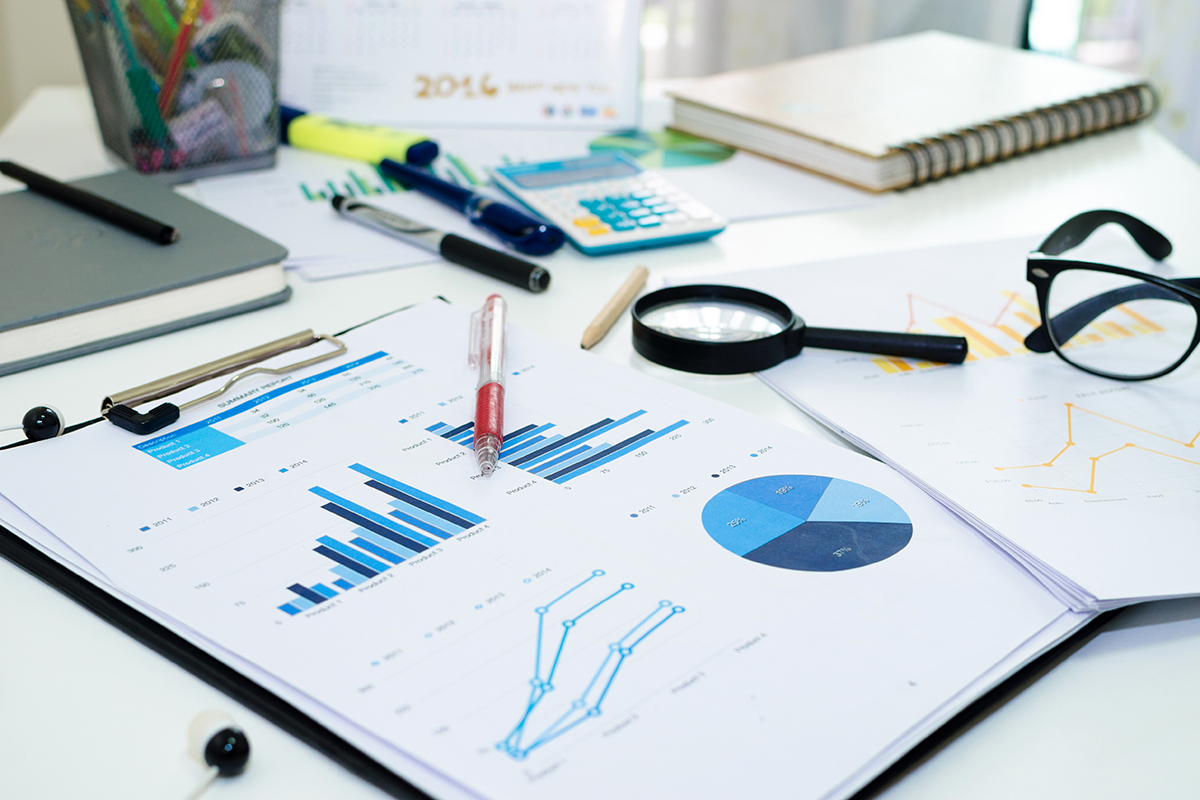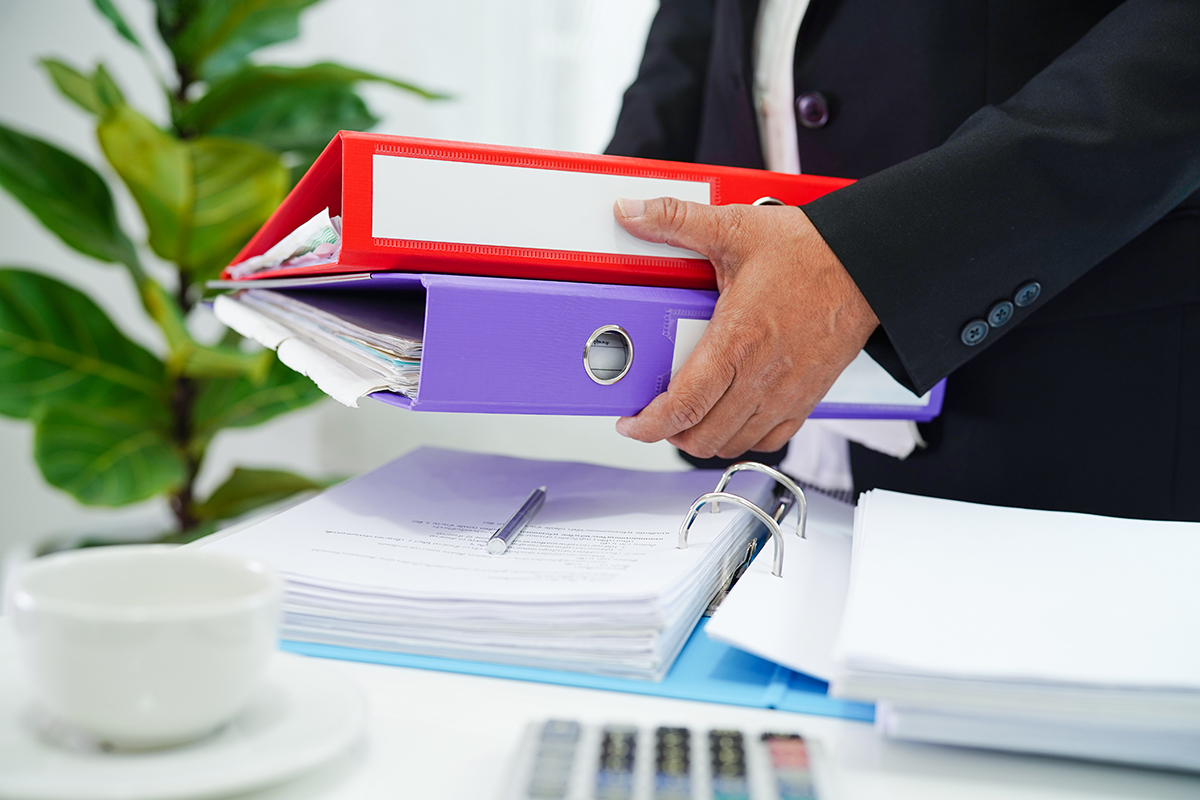If you’ve ever been asked to rate how satisfied you are with a product and/or service based on answers such as “Very Satisfied” to “Very Dissatisfied,”then you have encountered a Likert scale. The questions that you are asked with associated response choices and the individual answers you are required to choose from when answering the questions, e.g., “Very satisfied,” or “Very Dissatisfied,” are the Likert items. This scale is simply a combination of related Likert items similar in topic.
Download Free Likert Scale Templates
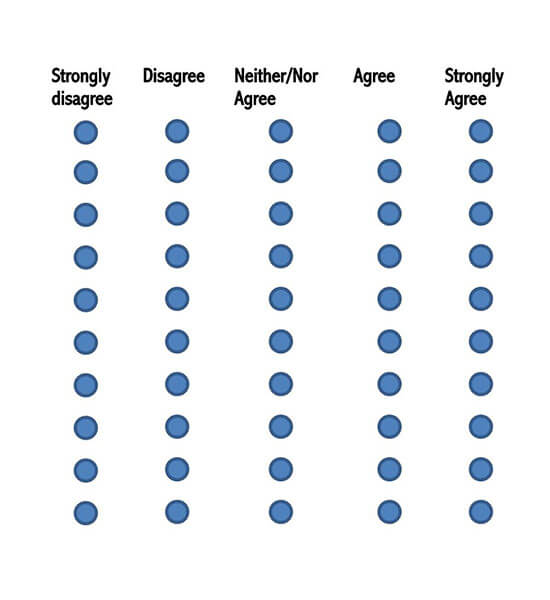
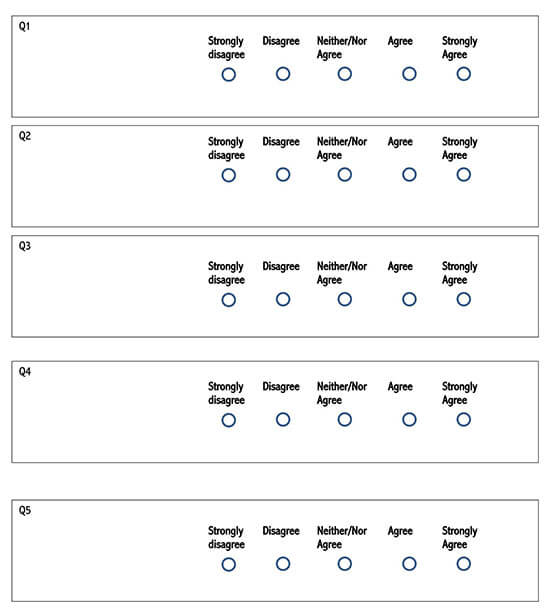
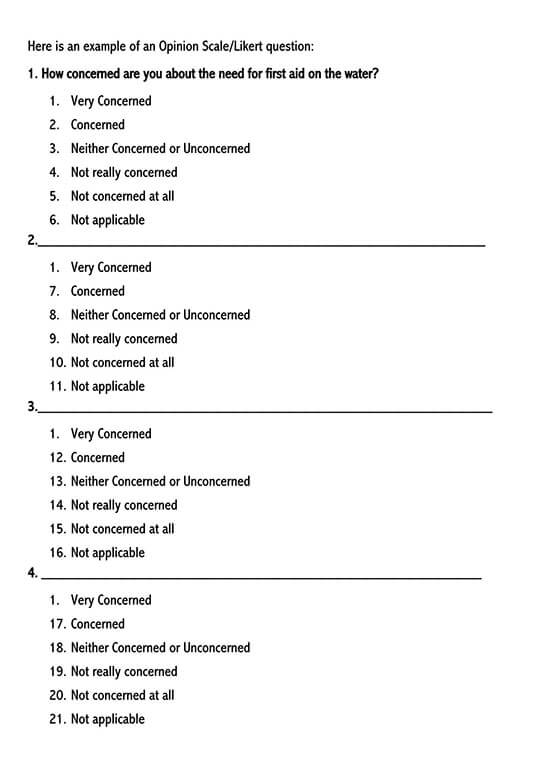
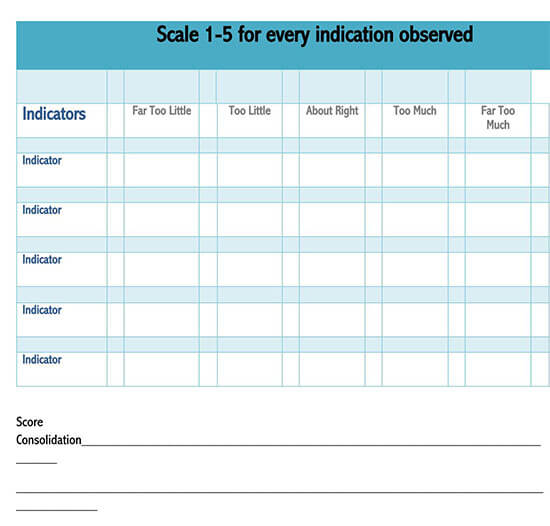
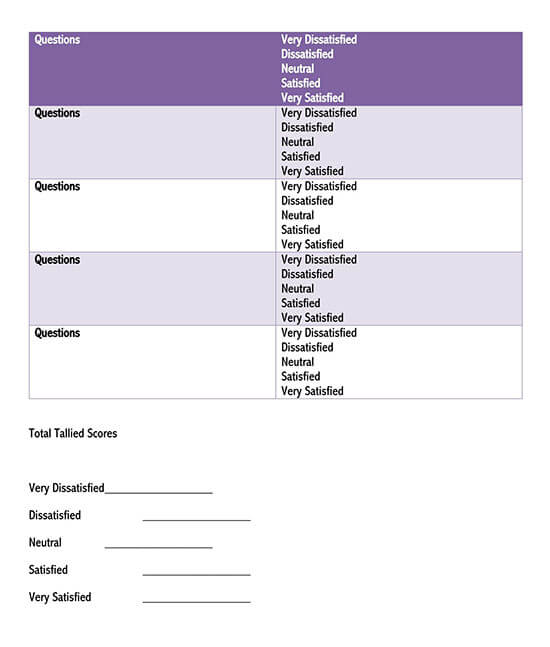
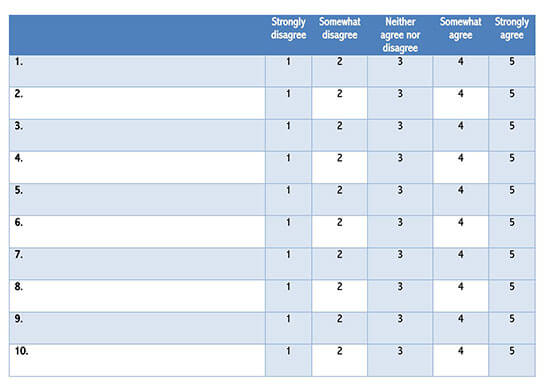
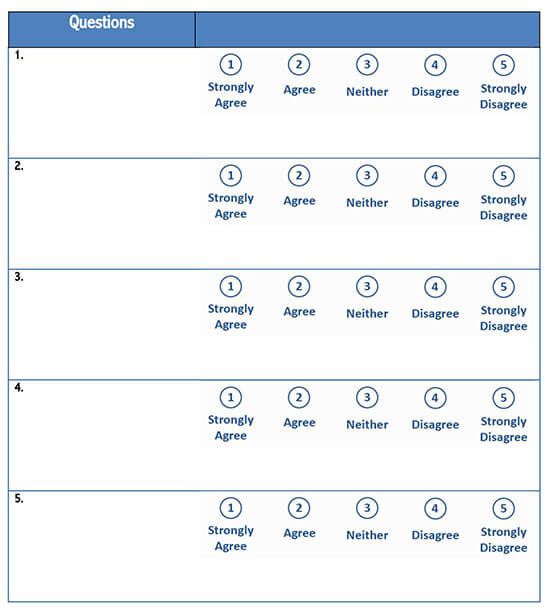

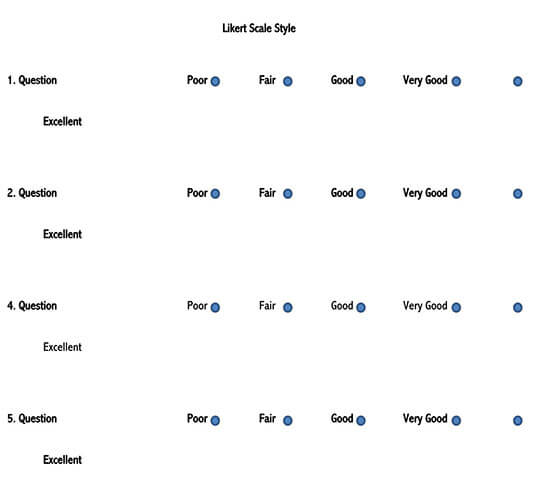
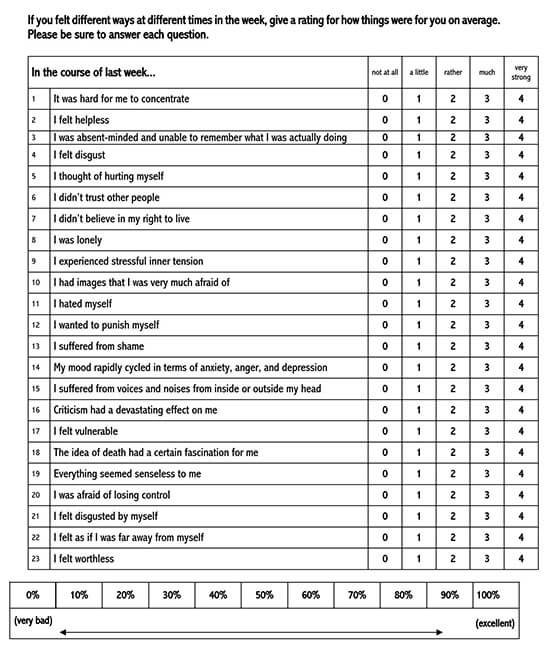


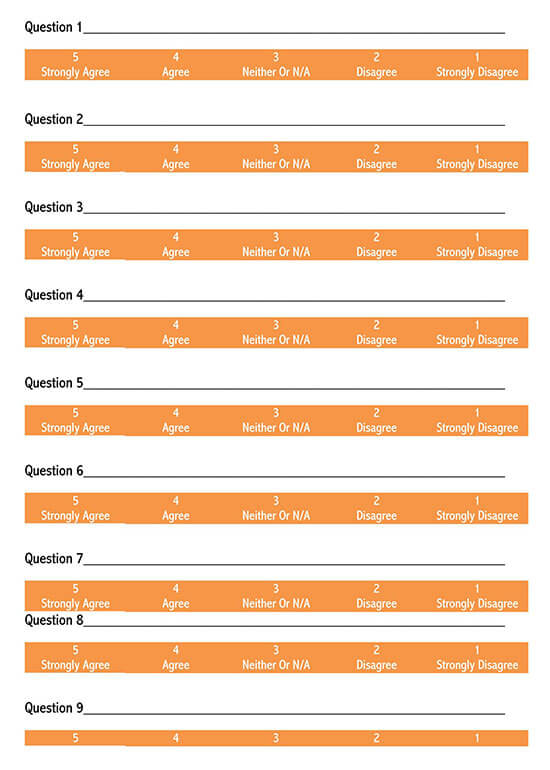

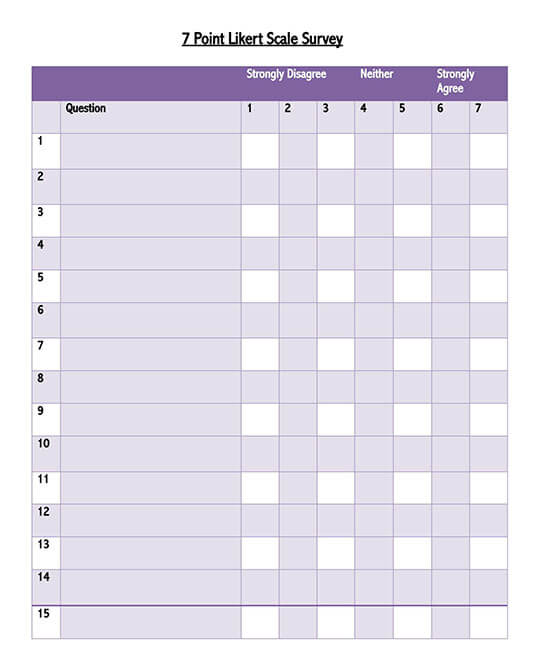
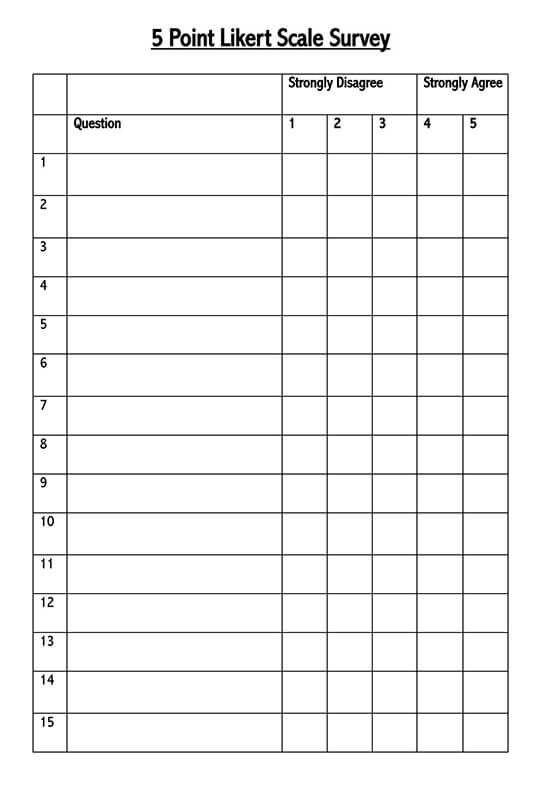
What is the Likert Scale?
A Likert Scale named for social scientist Rensis Likert is a unidirectional rating system used in questionnaires designed to measure people’s attitudes, perceptions, or opinions. Researchers often use the scale to understand the views and perspectives towards a brand, product, or target market. They choose from a range of possible responses to a specific question or statement; the responses typically include “strongly agree,” “Agree.” “Neutral,” “Disagree,” and “Strongly disagree.”
In most cases, the categories of responses are usually coded numerically or alphanumerically, in which case the numerical values must be defined appropriately for that specific study.
These scales are commonly used in social and educational research to assess the opinions, attitudes, and behavior of a given audience. When using the scales, the researcher must take into account issues such as the different categories of responses, the size of the scale they are using, the direction of the scale, the nature of the Likert-derived data, and the appropriate statistical analysis of such data.
Likert Scale Templates- PowerPoint
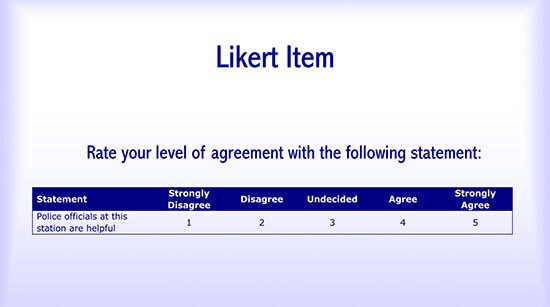
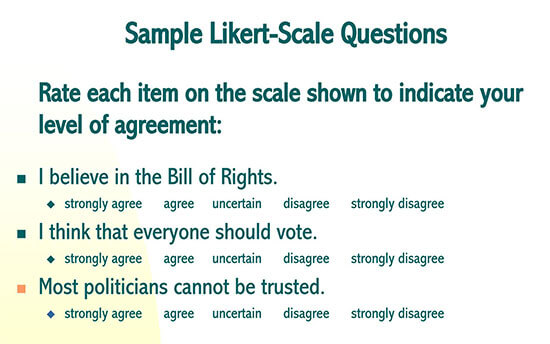
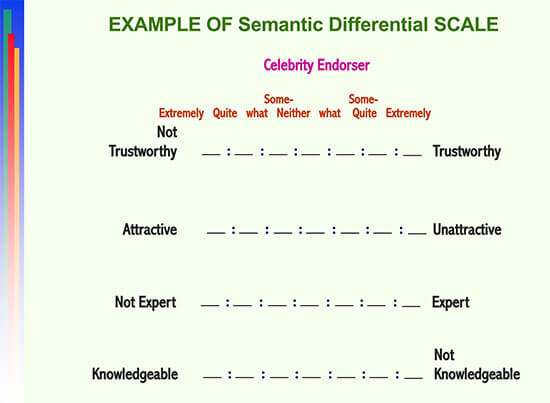
Characteristics of a Likert Scale
A good scale should have the following characteristics:
- Related answers: The items included in the scale should be easy to relate to the sentence’s answers, irrespective of whether the relationship between the item and the sentence is evident.
- Scale type: The items listed in the scale must have two extreme positions, for instance, “Strongly agree” and “Strongly disagree,” and an intermediate answer such as “neutral” that serves as a graduation point between the two extremes
- Answer options: The scale must have different answer options to help one make a choice. The more the choices, the greater the precision in the results.
- Increasing reliability on the scale: most of these scales usually have 5 answer options for respondents to choose from; however, most researchers have increased the number to 7 to help them get more precision on their questions. They do so by adding “very’ to the top and bottom of the five-point scale.
- Using wide scales: It should have a wider scale to increase the precision of the results. The scale should be developed in such a way that it covers all the key responses to the questions asked.
- Lack of neutral options: The scales at times have no neutral option to choose from. This is usually the case when the researcher is looking to eliminate the neutral possibility and force the respondent to make a choice. This is normally done by curtailing the scale to an even number option, i.e., having only the extremes and counter extremes, thereby eliminating the neutral option.
Likert Scale Templates- Excel
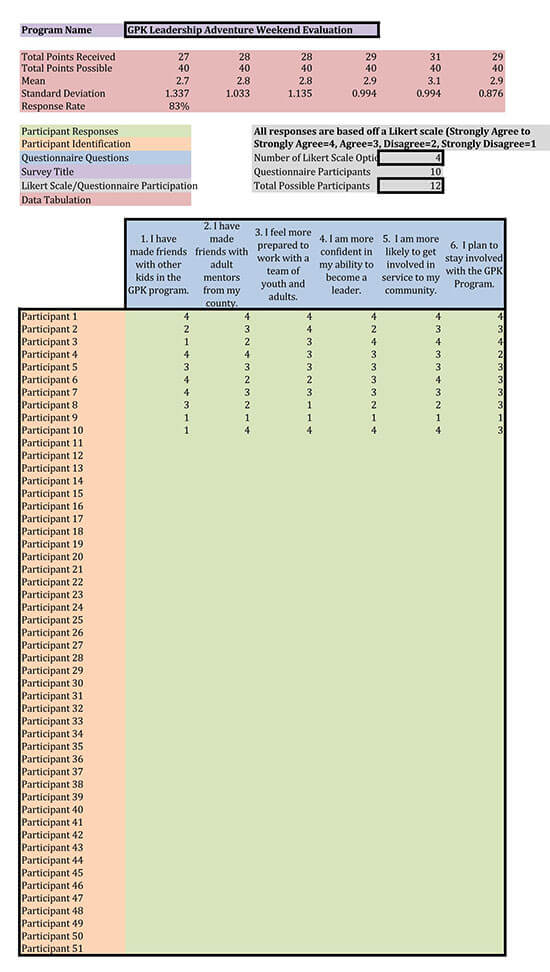

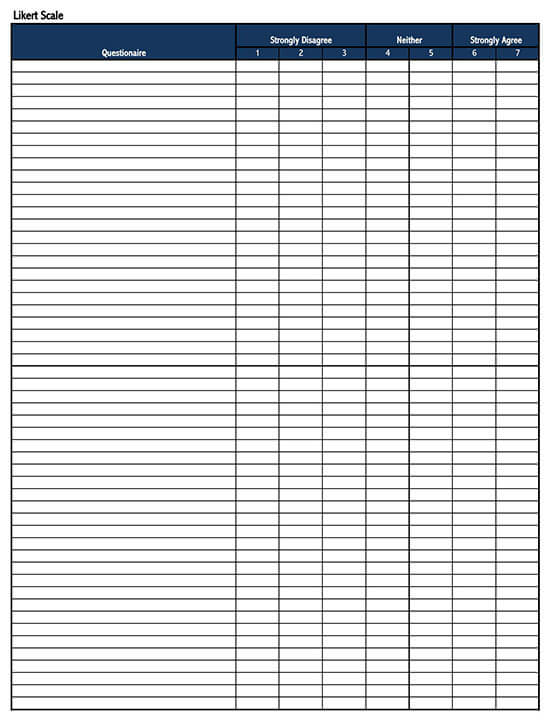
Example of a Likert Scale
The scale represents a set of answer options- either verbal or numeric- that covers a wide range of sentiments on a given topic.
Here is an example of how the scale questions are usually answered:
| Question or Statement | Answer Choices |
| Uber Eats invests its time and resources to ensure that its customers are satisfied | Strongly Agree, Agree, Neither, Agree nor Disagree, Disagree, Strongly Disagree |
| Express your level of satisfaction after ordering from the app | Highly Satisfied, Satisfied, Neutral, Dissatisfied, Highly Dissatisfied |
| I have to contact the rider every time to check on my delivery | Every Time, Almost Every Time, Neutral, Almost Never, Never |
The left side contains the questions or statements you are looking to get an opinion from the respondents. The right side contains the answer choices that the respondents can choose from.
The answers to the questions or statements normally depend on the type of survey that one is conducting. For instance, if you are surveying to find out whether the respondents agree on a particular issue or not, then your answers should range from “Strongly agree to Strongly Disagree.”
Consequently, if you are conducting a survey to determine the following:
- The Frequency use: often to never
- Quality: Very good to Very Bad
- Likelihood: Definitely to Never
- Importance: Very Important to Unimportant
Creating a Likert Scale Questionnaire
While preparing the scale questionnaire, it is crucial to follow a certain format. If you follow the following steps, you will succeed in creating the Scale questionnaire in the most efficient manner:
Step 1: Decide on what to measure
When conducting your research on something, there are those variables that you will have to measure in order to make a conclusion on the topic. These variables serve as the foundation of all your questions and the response scale. When doing your research, first find out what you are looking to measure from the variables you have and then develop the questions and possible answers to those questions.
Step 2: Create a Likert Scale indicator questions
After looking at your variables and determining that there are several factors that influence your audience either directly or indirectly, that is when you know that using the scale will be appropriate.
EXAMPLE
If you are looking to measure employee satisfaction in your organization, various things will directly or indirectly influence their satisfaction, such as timely payments, motivation, working environment, and support.
When creating the scale, in this case, you will have to look at all the factors that influence their satisfaction and address them in your survey. This will help you get the right response to all your questions and statements.
Step 3: Phrase your questions and statements
When preparing your Scale, you can decide to use both the questions and statements to help keep your respondents engaged. Come up with conventional questions or statements that they can easily relate to, making it easier for them to respond to them.
Step 4: Use positive and negative framing
Your questions should be mixed. They should have both positive and negative framing. If all your questions or statements only ask about things that the respondents are set to agree on, their participation may be biased as they would want to show themselves in a positive light.
Tips for Creating a Likert Scale Questionnaire
There are certain tips or considerations that you must keep in mind while preparing the scale Questionnaire. If you do so, you could attain the most perfectly prepared scale Questionnaire.
Some of such tips and considerations include:
- Be very specific with your questions and statements
- Make sure the language you use is easy for your target audience to understand
- Don’t use biased survey questions to force answers to your target audience
- Keep your questions and statements short and direct to the point.
Assessing the Responses
After you’ve collected the responses from your target audience, you can analyze each item either separately or add the answers to obtain a total value. Once you’ve obtained the total value, you can then calculate the average, median, and trend.
There are two types of tests that you can use to analyze the data that you obtain from the survey. These two types are:
- Parametric tests: All tests that fall under the category of parametric tests are the tests that assume the data’s underlying statistical distribution. This is often the assumption that the population data is evenly distributed.
- Nonparametric tests: All the tests that fall under the category of nonparametric tests are the tests that do not require a distribution to meet the required assumptions in order to be analyzed.
Frequently Asked Questions
Yes, of course, you can average a Likert scale, although taking the average of the scale will not, in most cases, provide useful answers to the questions or statements that you are seeking answers on.
Technically, one should not calculate the mean of a Likert scale. The scale is ordinal, which means that one cannot be able to tell if the gaps between the different levels are equal.
Likert is a unidirectional rating system used in questionnaires designed to measure people’s attitudes, perceptions, or opinions. Researchers often use the scale to understand the views and perspectives towards a brand, product, or target market.
Conclusion
A Likert Scale is one method of collecting data and a very important aspect of research because the level of data measurement normally determines the data analysis technique to be used. Understanding how to use the scale is a prerequisite to working with data and performing statistical analysis.


